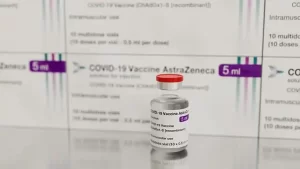EMBO Molecular Medicine: Can glioma be detected by urine or blood?
- Popular Indian Spices Banned in Hong Kong Over Carcinogen Concerns
- AstraZeneca Admits for the First Time that its COVID Vaccine Has Blood Clot Side Effects
- Gut Bacteria Enzymes Offer Hope for ABO Universal Blood Transfusions
- Well-Known Japanese Medicine Exposed for 30 Years of Data Falsification
- Oregon Reverses Course: From Decriminalization to Recriminalization of Drug Possession
- Why Lecanemab’s Adoption Faces an Uphill Battle in US?
EMBO Molecular Medicine: New scientific discoveries! Can glioma be detected by urine or blood?
EMBO Molecular Medicine: Can glioma be detected by urine or blood? Glioma is abbreviated as glioma, also known as glioma. It is the most common primary central nervous system tumor, accounting for about half of all intracranial primary tumors. It has a poor prognosis, short survival, and lack of effectiveness. Treatment methods.
The diagnosis of glioma has always relied on neuroimaging, but recently, researchers at the Cancer Institute in Cambridge, UK, confirmed that urine or blood tests can accurately identify different types of brain tumors, including gliomas.

Blood tests for detecting different types of cancer are the main focus of scientists’ research. At present, plasma cell-free DNA (cfDNA) has been widely used in non-invasive prenatal examinations and cancer liquid biopsy research. The physical characteristics of cfDNA fragments in plasma (such as fragment size and end) have aroused great interest among scientists. However, the detection of brain tumors by cfDNA is extremely challenging because of the low levels in body fluids.
Scientists already know that cfDNA with mutations similar to the original tumor is found in blood and other body fluids (such as urine), but at very low levels, but the challenge is to develop a test that is sensitive enough to detect these specific mutations.
In this study, the researchers developed two parallel methods to overcome the challenge of detecting cfDNA in brain tumors. The first method is suitable for patients who have previously had their glioma removed and undergo a biopsy. The team designed a tumor-guided sequencing test that can look for mutated fragments in cfDNA in patients’ urine, cerebrospinal fluid, and plasma.
This part of the study included 8 patients suspected of having brain tumors and collected cerebrospinal fluid, blood and urine samples. The researchers found that tumor-derived DNA was detected in most cerebrospinal fluid (7/8), plasma (10/12) and urine samples (10/16), with median tumor scores of 6.4 × 10 -3 and 3.1 × 10-respectively 5 and 4.7 × 10 -5. At the same time, it was found that the size distribution of tumor-derived cfDNA fragments in these body fluids has changed.

In the CSF, plasma and urine samples of patients with glioma, mutant cfDNA fragments are shorter than non-mutant cfDNA.
Then, the researchers used whole-genome sequencing to analyze the size of cfDNA fragments in urine samples from 35 patients with glioma, 27 patients with non-malignant brain diseases, and 26 healthy people. Compared with urine from patients with non-malignant brain diseases (P = 1.7 × 10 -2) and healthy individuals (P = 5.2 × 10 -9 ), cfDNA in the urine of glioma patients is more fragmented. Subsequently, the sequencing data is input into a machine learning model, which can distinguish urine samples from glioma patients.
The researchers said that although machine learning tests are cheaper and easier, and do not require tissue biopsy of tumors, their sensitivity and specificity are not as good as the first tumor-guided sequencing methods. MRI is not invasive, nor expensive, but requires a three-month interval, which may be the cause of frequent anxiety in patients.
In summary, compared to cerebrospinal fluid sampling, the non-invasive nature of plasma and urine may allow for more regular and less restrictive monitoring of GBM patients. Although the role of liquid biopsy in diagnosis has always been the focus of attention, both of the proposed methods may provide utility in subsequent settings combined with imaging. Although the research is still in its early stages and only a few patients have been analyzed and explored, the researchers said that it can be used to monitor high-risk patients with brain tumors in the future, which may be more convenient than having an MRI every three months.
(source:internet, reference only)
Disclaimer of medicaltrend.org
Important Note: The information provided is for informational purposes only and should not be considered as medical advice.



